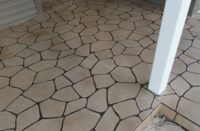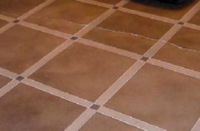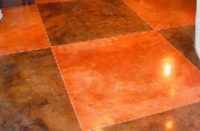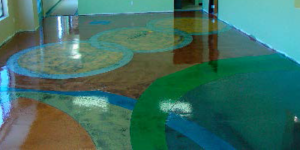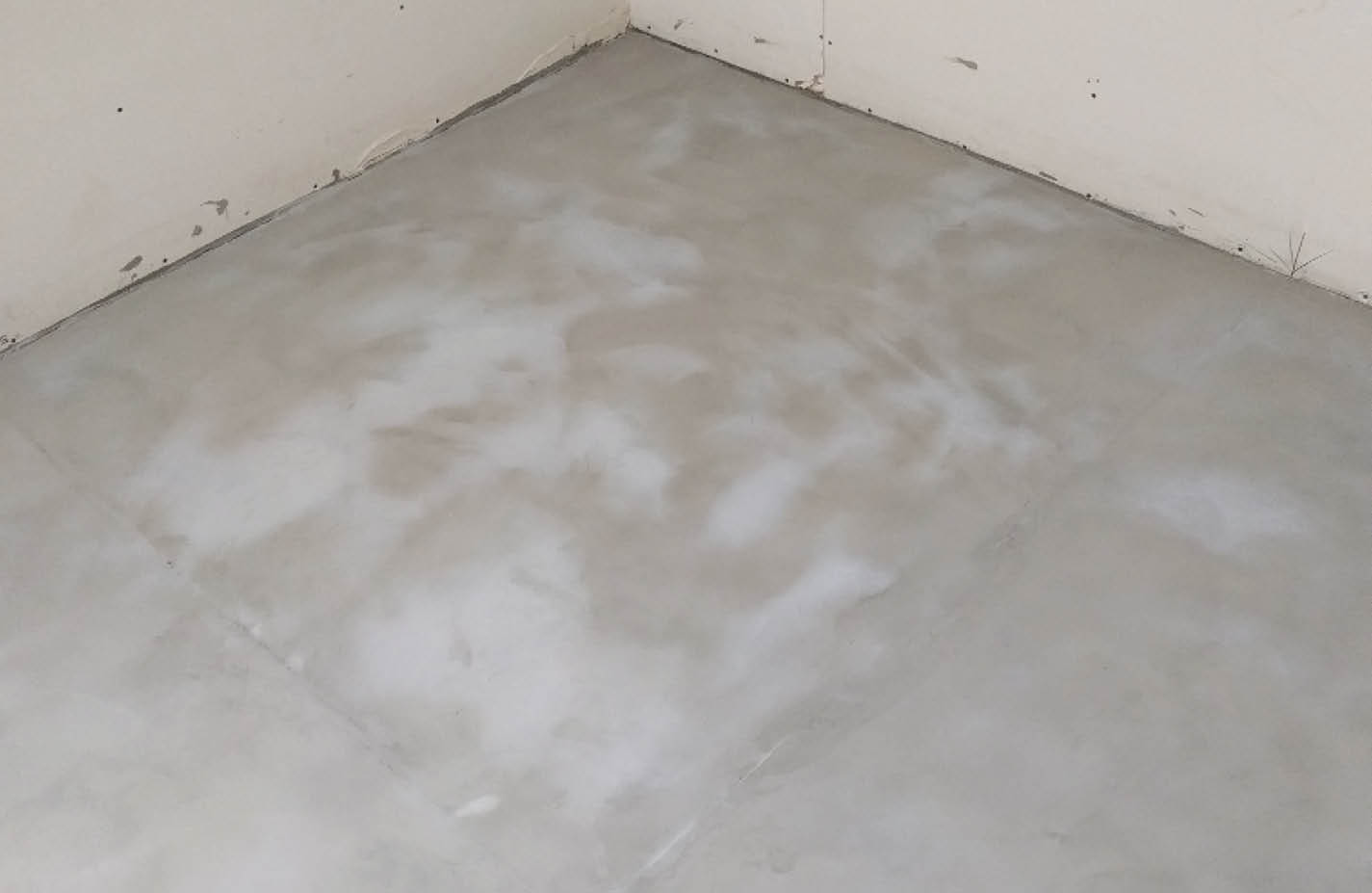
These questions came from a couple who were building a new home and wanted polished concrete floors. The main floor is slab on grade, while the second level is slab on an engineered raised subfloor. There were issues during the concrete finishing, which eliminated polishing as an option.
Subsequently, the general contractor and homeowners agreed on a light gray microtopping that would be applied over both the main and second floor to provide a smooth and uniform colored floor in place of polish. The microtopping was applied, and within 24 hours it started to turn white and blotchy. The homeowners did some research and reached out for assistance.
Question 1
Their first question was, “Can efflorescence happen on top of a microtopping the day after it’s put on a slab on a second floor? There’s no sign of efflorescence anywhere on the slab before the microtopping was put on. This is an indoor floor and a new slab.”
The short answer is yes. Anything that contains cement or lime has the potential to develop efflorescence. Efflorescence is caused by moisture migrating through the slab bringing soluble salts to the surface of the concrete. The soluble salts react with the atmosphere and become insoluble. This is why efflorescence can’t be cleaned with plain water.
Question 2
Their second question was, “Is efflorescence always powdery as it’s a salt? Our white spots look like the acrylic polymer they use while installing the microtopping came to the top! It only happens in some areas and not throughout the floor. They are not ‘powdery.’”
The answer here is also yes, but with a caveat. Efflorescence can present in many forms and colors. It’s not always white. In fact, depending on the type of salts, it can be green or have a slight bluish-gray tint. It can also be a fine powder to a large crystalline growth and everything in between.
Efflorescence is, however, always “powdery” in some way or another. In this case the white spots are not powdery, which I think rules out efflorescence.
Question 3
They actually answered the third question, which was, “The sub now wants to seal the microtopping to ‘blend in’ the white spots. We think it’s a bad idea.”
As I have preached for years, when in doubt, don’t seal! Once a sealer is applied the number of options to repair or change a decorative floor are significantly reduced.
If a sealer is applied, many times it needs to be removed, which is miserable work. Also, it’s not often a sealer will “blend” anything. In most cases the sealer has the opposite effect, enhancing or magnifying the issue. If a sealer is going to be applied as a repair or fix, always test in an inconspicuous place to make sure the result is acceptable.
White spots worsen
Lastly, they point out, after multiple microtopping applications, the problem is only getting worse. “Would you know what happened from the pictures? We have had them recoat several times and these white spots get worse each time! Any suggestions?”
We’ve already ruled out efflorescence because the spots aren’t powdery. We can also rule out issues caused by the concrete slab because after multiple applications of microtopping, discoloration caused by the slab should be reduced and, in this case, they claim it is getting worse. The pictures they sent showed that.
It is widely known that adding extra water to concrete while finishing increases the water-to-cement ratio at the surface, affecting the strength as well as diluting the color. This same theory holds true for microtoppings — and all cement-based toppings for that matter.
The argument can be made that because toppings are mixed in small quantities, small changes in water content while mixing or during installation will have a larger effect on the final product. From the pictures, and having seen this issue before, I suspected that there was an inconsistency in how the microtopping was being applied, which was creating the random discoloration.
Hunch is correct
The owners’ comments in question two, “Our white spots look like the acrylic polymer they use while installing the microtopping came to the top!” was spot on.
In a more in-depth discussion, the owners said the installers were randomly spraying the microtopping with a diluted liquid polymer as they troweled. The installers did this to aid in finishing and to help provide a smooth surface. What they unknowingly were doing was randomly diluting the microtopping, as well as creating a high concentration of polymer, creating the discoloration and probably affecting the strength of the product as well.
The solution is pretty straightforward. Apply the microtopping without adding any liquid while troweling. If the microtopping doesn’t finish to the desired degree of smoothness, the installers need to add extra water while mixing not installing. The other choice is to select a different product that will provide the desired finish.
The critical thing is to stay consistent — use the same amount of water, mix the same way, apply the same way and cure the same way. Consult the technical guidelines before adding any chemicals to make sure they don’t affect the final performance. You can use plasticizers or set retarders with some products to help how the product finishes.
Consumers today do their homework
As an interesting side note, this situation brings to light that the consumer has become much more educated and savvy. When you read the questions, it’s obvious the owners had done research, especially when you consider they aren’t in the concrete industry.
We can thank the internet for that. The amount of information available for those willing to spend a few minutes researching is staggering. As someone who uses the internet to reach thousands, I view this as a good thing — as long as the information is accurate and beneficial. When the consumer is educated, it serves to raise the bar for all involved.
As an industry, we should be on notice that the days of poor communication and lack of knowledge are over. The clients we deal with are all more knowledgeable and can research almost every product and system on the market. That means it is our responsibility to be better prepared because, in the end, the client is expecting us to be the experts.
